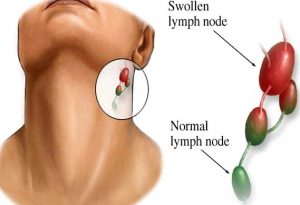What is Lymphoma?
Lymphoma is a cancer that develops in the lymphatic system, which is part of the body’s immune system. The lymphatic system contains immune cells called lymphocytes, which protect the body against the antigen (virus, bacteria etc) that enter the body. The organs that belong to the lymphatic system are bone marrow, lymph nodes, spleen, and thymus. Precursor cells in bone marrow produce lymphocytes. Lymphocytes B (B cells) mature in bone marrow. Lymphocytes (T cells) mature in the thymus gland. Abnormal lymphocytes that divide too fast and grow uncontrollably cause lymphoma.
Type of Lymphoma
Many different types of lymphoma exist but are generally divided into 2 main groups, depending on the (morphological) image of the cancer cell (malignant). The lymphoma is known as:
1) Hodgkin’s lymphoma (HL) (also called Hodgkin’s disease)
- This form is more commonly found in older children or teens than children less than 5 years old.
- This type of lymphoma is defined by the existence of a special malignant cell, named after Reed-Sternberg cells, in the lymph nodes or organs involved.
2) Non-Hodgkin’s lymphoma (NHL)
- This name is used for all other forms of lymphoma.
- Non-Hodgkin’s lymphoma is found in all age groups but is more commonly found in older people, over 50 years
- At non-Hodgkin’s lymphoma, there is a malignant-specific growth of lymphocytes (a type of white blood cells found in the lymph nodes).
- Malignant lymphocyte growth is also found in one form of leukemia (acute lymphoblastic leukemia, or ALL), which sometimes makes it difficult to distinguish between lymphoma and leukemia.
- In general, individuals with lymphoma exhibit multiple bone marrow involvement, ranging from no involvement at all or just minimal involvement to extensive engagement, while individuals with leukemia experience extensive bone marrow involvement from the beginning.
Both types of lymphomas are formed from the lymphatic system. But its effect on the body is different, spreading differently and responding to treatment differently.
Hodgkin’s lymphoma instead of Hodgkin is then divided into sub-types based on the specific type of cell involved, the maturity level reached by the cells, apparently under the microscope, or how the cells grow. This subtype helps doctors choose the most likely treatments.
Lymphoma Stage
Stage I (early stage disease) – Lymphoma located in one area of the lymph nodes or in an organ outside the lymph nodes
Level II (localized advanced disease) – Lymphoma located in two lymph nodes or more, all located on the same side of the diaphragm, or in a lymph nodes and adjacent tissues or organs. (Diaphragm is a thin muscle that separates the chest from the abdomen.)
Level III (advanced disease) – Lymphoma that affects two areas of lymph nodes or more, or one area of the lymph nodes and one organ, on both sides of the diaphragm
Phase IV (spreading or spreading disease) – Lymphoma outside lymph nodes and spleen, which has spread to other regions or organs such as bone marrow, bone or central nervous system.
Risk Factors of Lymphoma
Risk factors are anything that increases the chances of a person getting cancer. Although risk factors can affect the development of cancer, most of them do not cause cancer directly. The actual cause is unknown, but the following factors may increase the risk that a person gets lymphoma:
1) Age : Lymphoma may occur at all ages but non-Hodgkin’s lymphoma is more commonly found in older ages (over 50 years). Hodgkin’s lymphoma is most commonly found in people between the ages of 15 and 30 years.
2) Sex : Overall, men are more likely to have lymphoma than women, though the Hodgkin lymphoma-sub typical sclerosis is more commonly found in women.
3) Family history : Individuals and individuals of Hodgkin’s lymphoma show a higher chance of getting this disease (though it is likely that it is still small).
4) Exposure to the virus : Individuals infected with certain viruses may be at higher risk for some types of lymphoma.
5) Depressed immune function : Individuals with depressive immune function such as those with HIV infection have increased risk of developing lymphoma.
Lymphoma Cancer Symptoms
1) Swollen lymph nodes in the armpit, neck, or between the legs
2) Fever
3) Body becomes weak and tired
4) Weight loss
5) Always sweat
6) Difficult to breathe and often chest pain
7) Itching on the skin
8) Skin rash
